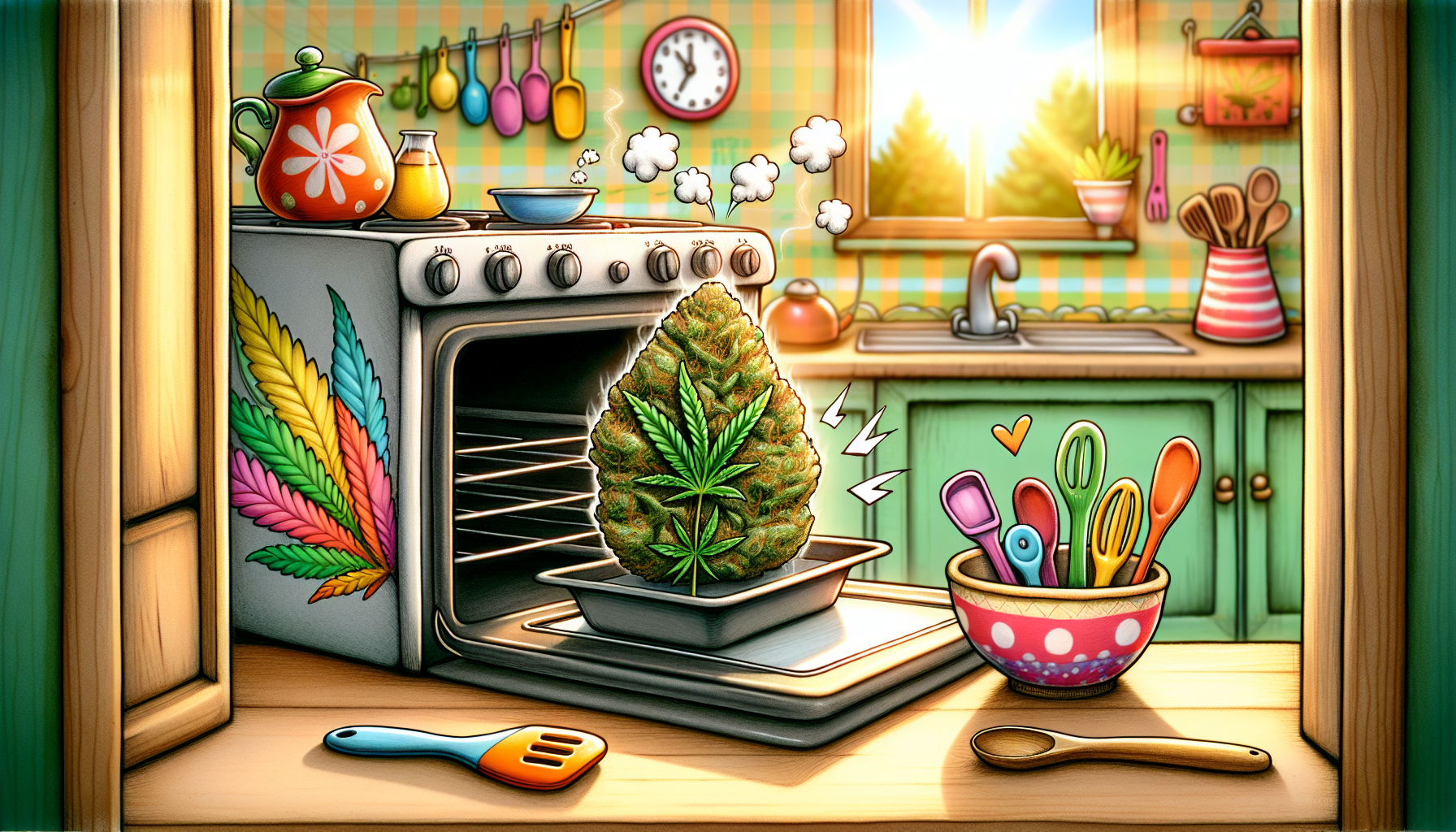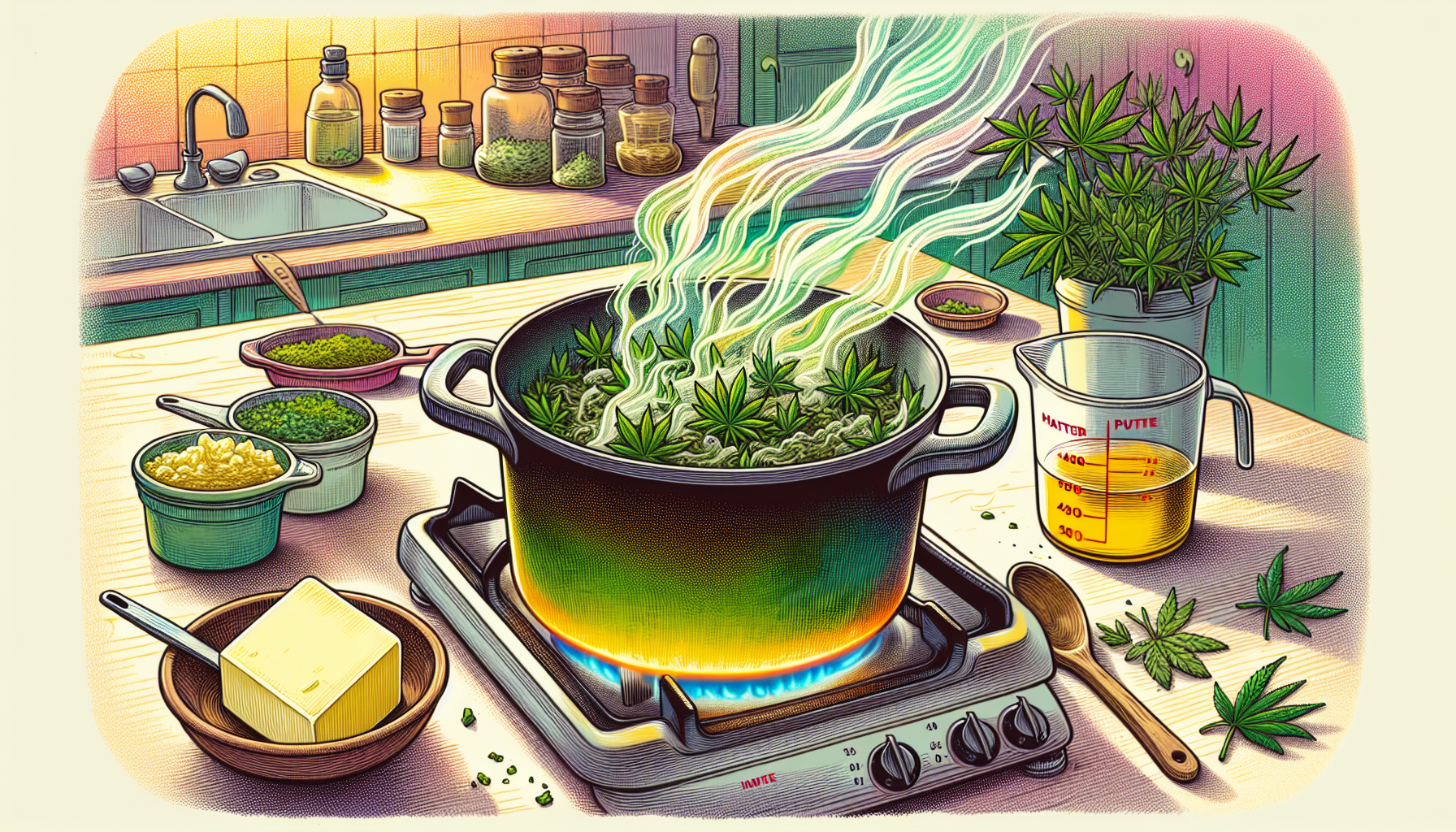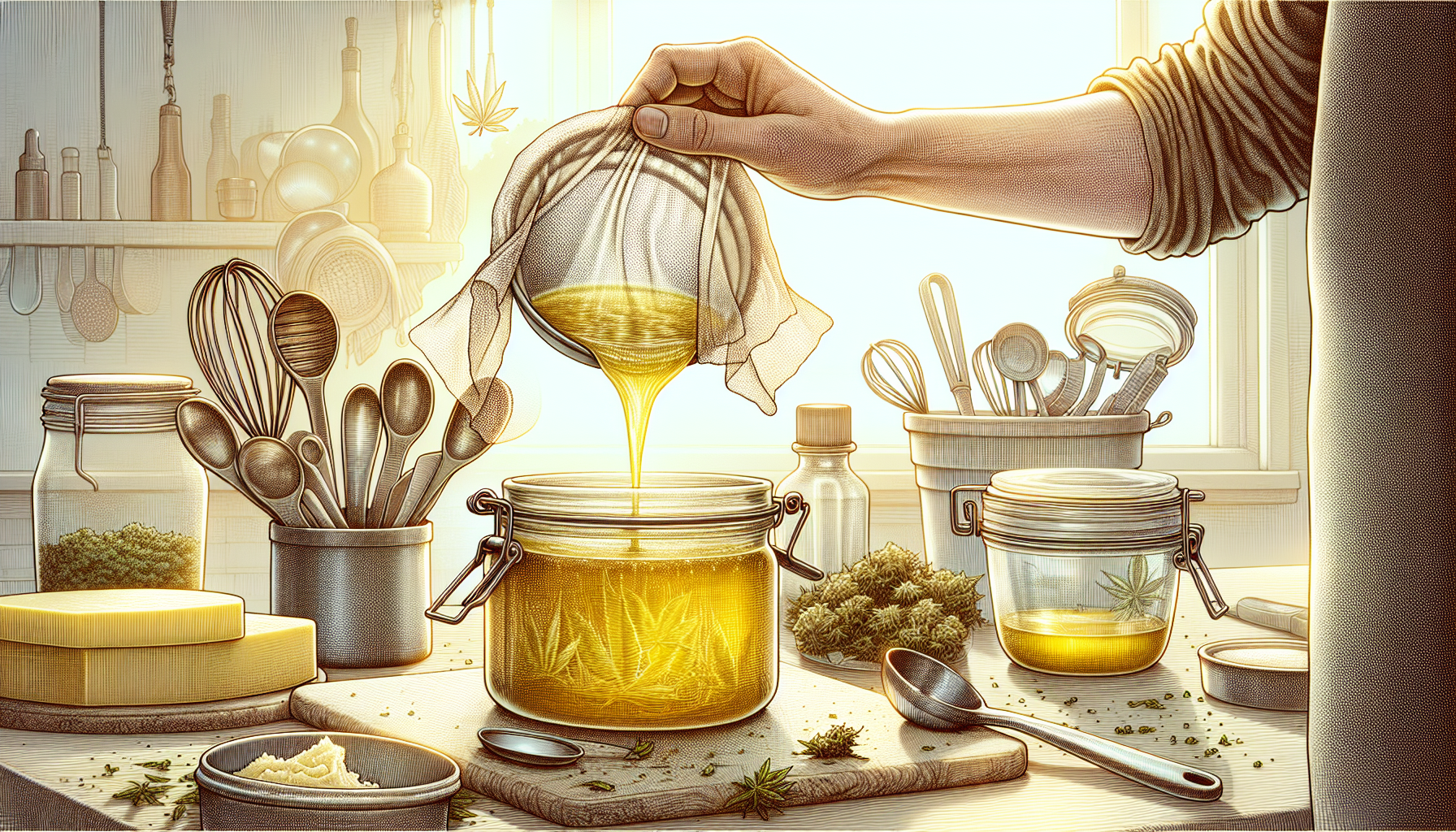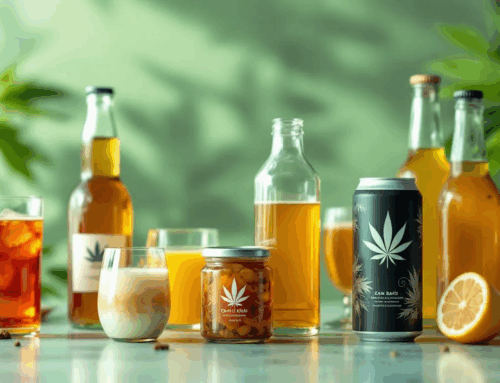How to Make Marijuana Butter: The Complete DIY Guide
Want to know how to make marijuana butter at home? This guide will show you. We’ll cover decarboxylation, choosing the right fat, and the infusion process. By the end, you’ll have potent, flavorful butter for your edibles.
Key Takeaways
- Decarboxylation activates cannabinoids in decarboxylated cannabis, making it essential for effective edibles. Bake at 220°F for 30 minutes.
- Choose your fat wisely for infusing; unsalted butter, coconut oil, and olive oil all work, but coconut oil is best for potency.
- Strain your cannabutter after infusion to remove plant matter, and store it properly in an airtight container for freshness.
Decarboxylating Cannabis

Decarboxylation is the magical step that transforms the raw cannabis flower into a potent ingredient for your edibles. Without this crucial process, your homemade edibles would lack the psychoactive punch that makes them so special. But what exactly is decarboxylation? It’s the process of converting acidic cannabinoids like THCA and CBDA into their active forms, THC and CBD, through the application of heat, resulting in active cannabinoids.
Bake your cannabis in the oven at around 220°F for 30 minutes to decarboxylate it. This temperature ensures that the cannabinoids are activated without burning the delicate plant material. If you’re short on time, you can increase the temperature slightly, but be careful not to go too high as it can degrade the cannabinoids.
Decarboxylation ensures the active molecules are present, maximizing the effects of your homemade treats. So, don’t skip this step – it’s the key to unlocking the full potential of your cannabis!
Choosing Your Fat
The fat you select for your marijuana butter affects both the flavor and texture of your edibles, as well as the efficiency of the cannabis infusion. While unsalted butter is a classic choice, other options like coconut oil, olive oil, and vegetable oil are also popular.
Cannabis butter has a rich, creamy flavor that works wonderfully in both sweet and savory dishes. On the other hand, cannabis oil offers versatility and can be used in a variety of cooking methods, whether you prefer butter or oil. Coconut oil is particularly favored for cannabis infusions due to its higher fat content, which helps absorb more cannabinoids, resulting in a more potent product.
A common ratio for making cannabutter is 1:1, one cup of ground cannabis to one cup of butter. For a milder effect, adjust the ratio, such as using 1/2 cup of ground flower or 3-4 grams for a less potent product. The choice is yours – experiment to find what works best for you!
Infusion Process

With decarboxylated cannabis and chosen fat, the infusion process begins. The cannabis melds with the fat over low heat, creating a potent and versatile butter. Gather butter, cannabis, time, and patience to get started.
There are two main methods for infusing cannabis with fat: the stovetop method and the slow cooker method. Both have their pros and cons, and the choice largely depends on your personal preference and available equipment. Here are the details of each method to help you decide which suits you best.
Stovetop Method
The stovetop method is a classic approach to making cannabutter. Start by melting your butter in a medium saucepan over low heat. To prevent the butter from scalding, add a bit of water to the pot – this will help regulate the temperature and ensure a smooth infusion. Once the butter is melted, add your decarbed cannabis and stir occasionally.
The infusion process can take anywhere from two to four hours, depending on your desired potency. It’s important to keep the heat low and stir occasionally to ensure the cannabis is evenly spread throughout the butter. Using a double boiler can also help maintain a consistent temperature and prevent burning.
While this method requires a bit of attention and care, the end result is a rich, potent canna butter that can be used in a variety of baked goods and savory recipes. Grab your wooden spoon and start stirring!
Slow Cooker Method
The slow cooker method is a foolproof way to make cannabutter, especially for those who prefer a hands-off approach. Using a slow cooker allows for a more controlled cooking environment, reducing the risk of burning your butter. Start by adding your melted butter and decarbed cannabis to the slow cooker, set it on low heat, and let it steep for about three hours.
This method requires minimal effort – just a bit of gentle mixing and the occasional stir to ensure even distribution. The crock pot maintains a consistent temperature, making it ideal for those new to cannabis infusions. Plus, it frees up your time to work on other parts of your recipe or simply relax while the magic happens.
At the end of the steeping time, you’ll have a beautifully infused butter ready for straining and storing. Whether you’re making savory recipes or sweet treats, the slow cooker method provides a reliable and easy way to create cannabis-infused butter.
Straining and Storing Your Cannabis Butter

Strain your cannabutter after infusion to remove any remaining plant material, crucial for a smooth, high-quality final product. You’ll need a fine-mesh strainer or cheesecloth to separate the plant matter from the butter. Simply pour the hot butter mixture through the strainer into a bowl, gently break down any clumps, and let it cool.
Once strained, transfer your cannabis-infused butter into an airtight container for storage. If you prefer a longer shelf life, consider using clarified butter or coconut oil, as these fats tend to last longer than regular butter. Store your cannabutter in the refrigerator for up to two weeks, or freeze it for up to six months to preserve its potency.
Proper straining and storage keep your cannabis butter fresh and effective for various homemade edibles.
Dosing and Potency
One of the most challenging aspects of making cannabis edibles is determining the right dosage. Homemade cannabis butter can vary significantly in THC content, making it easy to accidentally consume more than intended. To start, it’s recommended to use a small amount, around 5-10 mg of THC per serving, and adjust based on your personal tolerance.
Test a small amount, like ¼ teaspoon of your cannabis butter, to gauge its effects before consuming a full serving. Remember, the effects of edibles can take up to an hour or more to manifest, so be patient and wait before deciding to take more. This cautious approach prevents overconsumption and ensures a more enjoyable experience.
To establish a personalized dose for your recipes, use the tested potency as a baseline and multiply by the number of servings. This way, you can create consistent and predictable cannabis-infused treats that suit your needs.
Creative Uses for Marijuana Butter

Marijuana butter isn’t just for brownies – it can enhance a wide range of dishes, adding a unique twist to your culinary creations. Incorporate your weed butter into mashed potatoes, garlic bread, or sauces and soups for savory options. The rich, creamy flavor complements these dishes beautifully.
Looking for fun snack ideas? Try making infused popcorn or spreading cannabis butter on your morning pancakes or waffles for a delightful breakfast treat. Experimenting with different recipes can be a fun way to explore the culinary potential of your homemade cannabutter.
For dessert lovers, cannabis-infused butter can be used in cakes, cookies, frostings, and more. Whether you’re making a classic chocolate cake or a batch of cookies, adding marijuana butter can elevate your sweets to a whole new level. So, get creative in the kitchen and discover the many ways you can enjoy your homemade cannabis butter!
Tips for First-Time Users
Start with low doses and take it slow if you’re new to cannabis edibles. Begin with a small amount of food made with cannabutter, wait about 45-60 minutes, and assess the effects before consuming more. Patience is key, as the effects of edibles can take 2 to 4 hours to peak after ingestion.
Personal factors like body size, gender, and metabolism can influence how cannabis edibles affect you. Be mindful of these variables and adjust your dosage according to your personal tolerance to ensure a comfortable experience. Additionally, be aware of potential side effects, such as sleepiness, dry mouth, and paranoia, and take steps to mitigate them if needed.
By following these tips, you can enjoy a safe and enjoyable experience with cannabis edibles, making the most of your homemade marijuana butter.
Summary
Making marijuana butter at home is a rewarding and enjoyable process that opens up a world of culinary possibilities. By understanding the importance of decarboxylation, choosing the right fat, and mastering the infusion process, you can create potent and delicious cannabis edibles. Proper dosing and creative uses ensure that you get the most out of your homemade cannabutter while staying safe and enjoying the experience.
We hope this guide has inspired you to try making your own marijuana butter and explore the many ways you can incorporate it into your cooking. Happy baking, and enjoy your elevated culinary adventures!
Frequently Asked Questions
Why is decarboxylation important when making marijuana butter?
Decarboxylation is crucial because it activates the THC and CBD in cannabis, ensuring your marijuana butter actually packs a punch. Without it, your edibles won’t have the desired psychoactive effects.
What types of fat can I use for making weed butter, including coconut oil?
You can make weed butter with unsalted butter, coconut oil, olive oil, or vegetable oil—coconut oil is especially great because it’s high in fat. Just pick one that suits your taste and get cooking!
How can I avoid burning my cannabutter during the infusion process?
To avoid burning your cannabutter, keep the heat low and add water to the pot if you’re using the stovetop method. A double boiler can also help maintain a steady temperature, so stir occasionally and you’ll be good to go!
How do I determine the right dosage for my cannabis edibles?
To find the right dosage for cannabis edibles, start with 5-10 mg of THC and try a small portion. Just remember to wait at least an hour before taking more to avoid overdoing it.
What are some creative ways to use marijuana butter in cooking?
You can get super creative with marijuana butter by mixing it into mashed potatoes, drizzling it over garlic bread, or using it to make delicious snacks like infused popcorn. Desserts like cakes and cookies can also get a special kick with a dollop of that magic butter.






Leave A Comment
You must be logged in to post a comment.